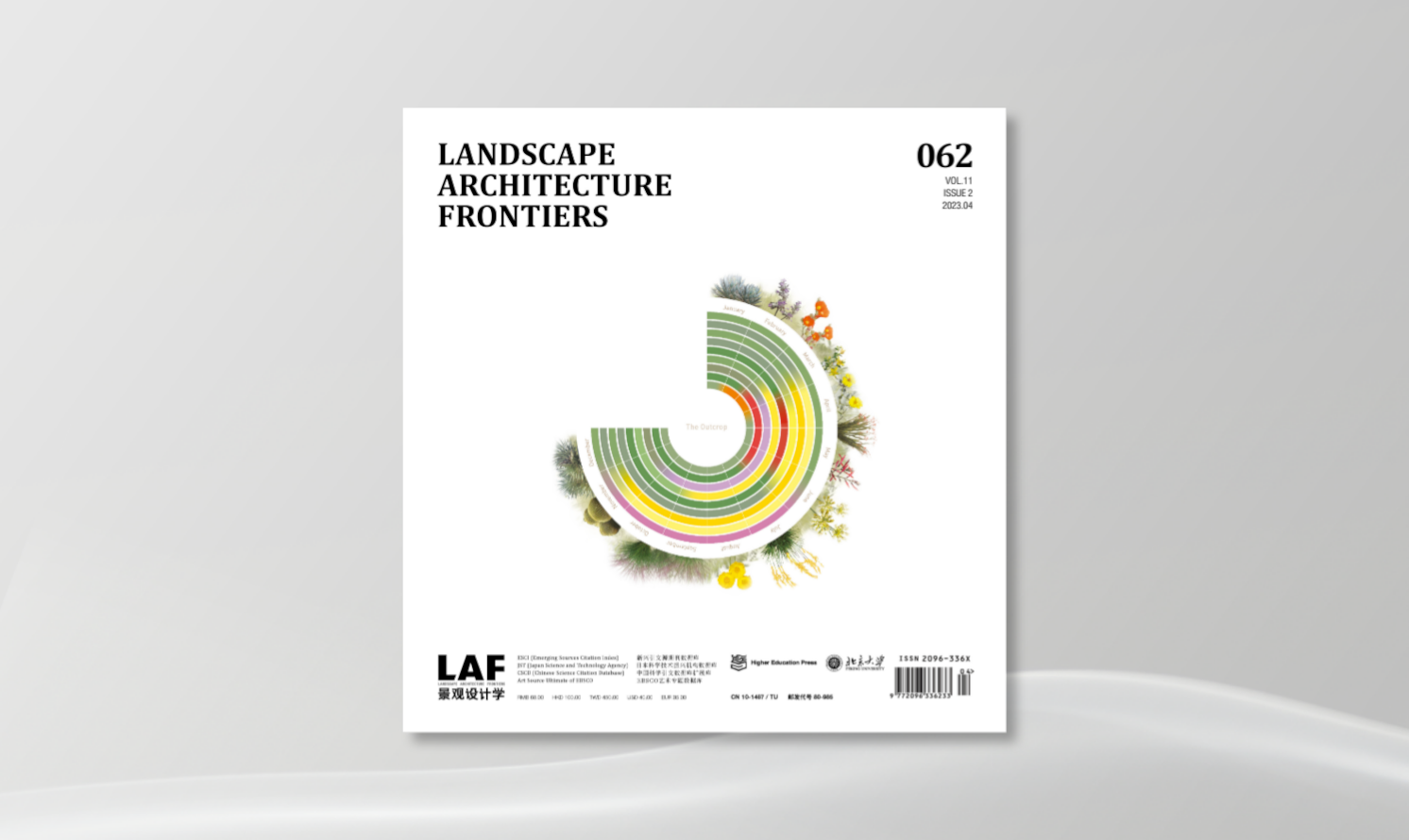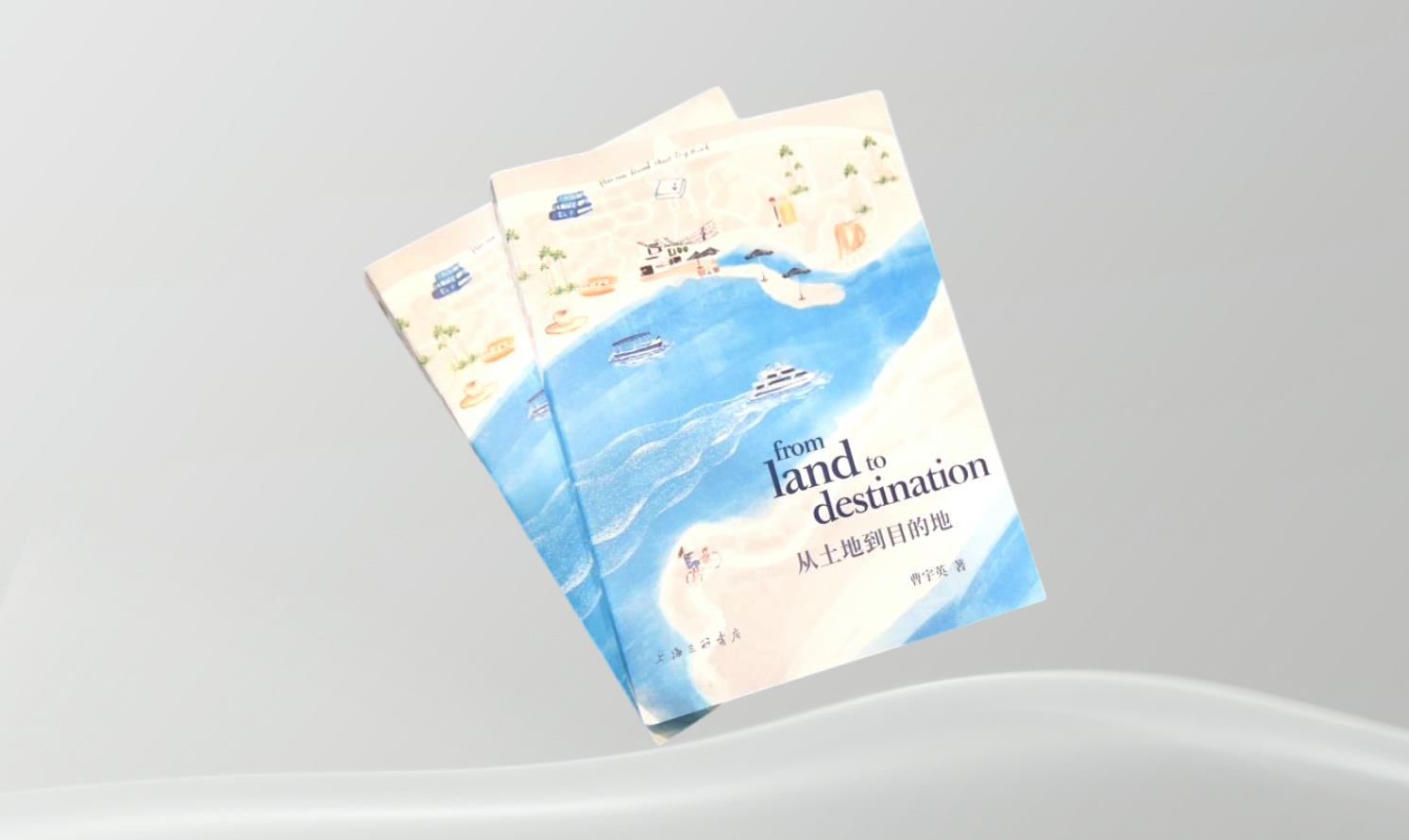-
《景观设计学》2023年第2期
作 者:俞孔坚(YU Kongjian),孟丹诚(MENG Dancheng),徐磊青(XU Leiqing)等类 别:景观出 版 社:高等教育出版社出版时间:2023-04
技术“敌托邦”的解药——基于自然治愈地球的中国模式
Antidote to Tech Dystopia: The Chinese Model of Nature-based Solutions
(俞孔坚,《景观设计学》2023年第2期“主编寄语”)
1 技术“敌托邦”的机遇与挑战
仇保兴先生在2023第十九届国际绿建大会的发言中提到绿色建筑发展的三个趋势:第一个是节能,第二个是技术创新(更多地运用可再生能源),第三个是人民对美好生活的向往。这三个部分需要统筹起来,否则会出现“技术‘敌托邦’”的现象[1]:技术是一把双刃剑,善用可改善环境,反之则会造成新的环境问题——我称之为“技术‘敌托邦’”(tech dystopia)。我控诉“技术敌托邦”并非反对技术,而是需要探讨在何种情况下技术能够更好地被应用。我认为,它的解药是一种基于自然的中国模式。
在全球气候变化的大背景下,我们的城市面临着重大挑战与困境:部分城市饱受季节性洪涝灾害或干旱、地表水与地下水污染,以及生物栖息地丧失等影响。由此,人类尝试用新的技术来解决这些挑战与困境——例如抗压和抗拉强度更大的水泥、塑性和韧性更好的金属、更高效的光伏等常规的灰色基础设施途径都在今天显得必要且可能“上瘾”。
机遇与危机并存,人们过度利用技术——包括各种“绿色技术”——造成人们对自然的依赖性降低,自然生态系统的作用被忽视、生态韧性遭到破坏,割裂了人与自然。这造成了工业文明的“怪圈”,当下亟需摆脱这一怪圈,恢复人与自然的和谐共生。
2 单一“双碳”目标下的技术“敌托邦”
单一的“双碳”目标可能带来潜在的技术“敌托邦”。以风电技术为例,它提供绿色的、清洁的能源,但西方环保主义者发起了一场反对风电的运动,理由是风力发电危及了鸟类的生存,仅美国一年就有数十万只鸟类死于扇叶之下[2]。当风电设施布满水面、山坡、河谷时,可能“飞鸟如噩梦,静夜不能寐,山峦多疥疮,水不复妩媚”的“敌托邦”景象也就出现了。同样,光电技术也造成了“光电‘敌托邦’”的景象。例如,行走在云南和西藏的田野时,映入眼帘的是布满光伏板的山坡,是一种望不见山、看不见水的“敌托邦”景象。水电技术也会带来同样的问题,水电被认为是绿色的,但一些过度开发的水电工程却造成了枯水季河道干涸,生境受损,鱼鳖绝迹。这些都证明单一的功能导向可能会使我们的环境保护变得事与愿违,不是更绿色、更美丽了,而是“更灰色、更丑陋”了,这便是我对技术“敌托邦”的担忧。因此,解决国土生态被破坏的问题,我们需要有更可持续的途径,于是,我们在探索未来的征程上重新发现始于远古的基于自然的智慧。
来自加拿大康考迪亚大学的两位学者达蒙·马休斯和赛思·怀恩斯在回顾全球应对气候变化的行动——包括在去年《联合国气候变化框架公约》第26次缔约方大会(COP26)上做出的承诺——时表示,即使穷尽今天的技术,《巴黎协定》所倡导的将本世纪的全球气温升幅限制在2℃以内、同时寻求将气温升幅进一步限制在1.5℃以内的措施这一目标也很难实现[3]。因此,当现代技术无法解决环境问题时,另一个行之有效的途径是基于自然,让自然做功,倡导让城市本身回归自然。
3 NbS的概念与提出
2008年,世界银行在《生物多样性、气候变化和适应性》报告中首次提出,基于自然的解决方案(Nature-based Solutions,NbS)可以成为一种在减缓和适应气候变化影响的同时,保护生物多样性并改善可持续生计的途径[4]。世界自然保护联盟将NbS定义为通过保护、可持续管理和修复自然或人工生态系统,从而有效和适应性地应对社会挑战,并为人类福祉和生物多样性带来益处的行动[5]。NbS即一种基于自然、让自然做功,以综合、系统的途径解决问题、实现绿色低碳发展的方法[6]。
4 NbS的关键技术与难点
目前,NbS有两大关键技术难点。一个是规划难点:土地有限!耕地、生态与建设用地矛盾尖锐,我们需要探索如何用最少的土地构建最有效的生态空间。一个是设计与工程难点:效率低标准化差!若用工业文明的价值标准来衡量,自然本身是低效的。例如,相对于光伏发电的高效来说,自然界的光合作用成果——生物质转化成电能——是低效的(但自然过程产生的综合生态服务并没有被计算进去,因而被忽视);同时,自然技术也面临难以标准化的问题。因而,如何使基于自然的智慧成为高效、标准化、可复制的现代工程技术,亟待关键技术的突破。
5 NbS的中国模式
NbS具有文化属性。人类在千万年来对自然的适应过程中产生了文化。中国五千年的农耕生态智慧和文化遗产中所蕴含的传统生态智慧,可以为解救全球气候变化背景下的地球生态困境提供启示;同时,中华大地上生态和文化的多样性得以应对未来的各种不确定性,中国在实践NbS中积累的经验智慧也具有全球普适意义。例如,中国季风性气候显著,从而产生了能够应对季风性气候的策略;中国人多地少,中国人具有集约和高效利用自然的文化基因,自古便懂得如何用最节约的方法来解决生存问题。因此,中国在基于自然的文化积淀里,产生了解决两大难题的智慧。第一,重视对如龙山、水口、水脉等关键空间格局的保护;第二,因地制宜适应、节制和循环利用资源,如造田、灌溉、施肥和种植模式。前者是国土空间规划问题,后者是工程技术问题。因此,在解决上述NbS难题,以及构建治愈地球的理论体系、规划方法与工程技术方面,我们有足够的基础形成“中国模式”,对世界做出贡献。
基于自然的中国规划模式旨在寻求人文与自然之间的空间关系和空间格局。中国人很早就发明了罗盘来解决规划的问题:古人用罗盘来判断栖居的方位和朝向,以避免自然灾害。工业化建设工程的常规模式是违背自然的,对此,逆向的、基于自然和生态优先的规划途径——“反规划”途径被提出。这是一种强调通过优先进行不建设区域的控制,进行城市空间规划的方法论,是对快速城市扩张的一种应对[7]。为此,提出生态安全格局(Ecological Security Pattern)理论和方法,研究如何通过节约、集约的土地利用方式,整合自然与人文过程,实现精明保护与精明发展[8]。通过规划形成中国国土尺度的自然保护空间格局,以应对自然气候变化、解决碳排放的问题,这需要相关法规的保障[9][10],实现通过政策推进的国土空间的高效利用和美丽国土的深邃格局。
基于自然的中国设计和工程模式是一种“道法自然”的增强设计[11],可以提高自然修复的效率。针对自然途径效率低、标准化差等难题,对传统生态智慧进行模式提炼、增强设计、运行检测,以传统生态智慧中的梯田、陂塘、基塘、垛岛等为核心技术,形成标准化生态工程技术模块,并应用于大规模的国土空间生态修复,为当代的工程技术提供示范。
生态文明是一场对工业文明的革命,需对工业文明的任何技术成果都保持谨慎、保持怀疑的态度,重新发掘中国五千年农业文明积累的智慧——先辈们的实验为我们应对当代环境挑战提供了丰富的解决方案。一方面,我们要像国君一样思考——思考全球变化,思考国土空间的变化;另一方面,我们要像农民一样行动——从开垦、灌溉、施肥、收获的智慧中吸取营养,解决全球问题!前不久,中国自然资源部与IUCN联合发布了《IUCN基于自然的解决方案全球标准》中文版,中国十个项目入选NbS全球标准。包括英国广播公司(BBC)在内的全球主流媒体、世界卫生组织等机构也正在推广中国的治水经验,这代表NbS的中国模式已经得到了世界认可。为实证检验基于自然的中国模式的实践成效,后期需进行绩效评估,以揭示不同NbS工程模式的生态绩效影响因素与调控机理,从而解决自然途径缺乏科学数据支撑的难题。
注释:本文根据作者于2023年5月16日在中国第十九届国际绿建大会上的主旨报告整理而成。
1 Opportunities and Challenges of Tech Dystopia
Baoxing Qiu, former vice minister of Housing and Urban-Rural Development of China, pointed out three trends of green building development on the 19th International Conference on Green and Energy-Efficient Building & New Technologies and Products Expo, namely energy conservation, technological innovation (to promote the use of renewable energies), and fulfillment of people’s aspiration for a better life. If any of these aspects is neglected in practice, tech dystopia would appear[1]—As a two-edged sword, technology should be wisely harnessed to improve environment; otherwise, it could give rise to new environmental issues, i.e., tech dystopia. The response to tech dystopia is not to deny the advantage of technology; instead, is to explore what a better role technology can play. I believe that the Chinese model of nature-based solutions (NbS) is an antidote to tech dystopia.
As global climate continues to change, cities are confronted with severe challenges and dilemmas, such as seasonal floods and droughts, surface and groundwater pollution, and habitat loss. To address these issues, new technology is employed. For example, we keep improving the performance of concrete, metals, and photovoltaic modules that are increasingly used in the construction of conventional grey infrastructure, as a have-to but seemingly “addictive” solution.
Opportunities come along with challenges. Over-reliance on technology, including various “green technologies,” makes us more and more neglect the role of natural ecosystem, deteriorating ecological resilience and separating human and nature. It is the time to break such a “vicious cycle” under industrial civilization and rebuild the harmony between human and nature.
2 Tech Dystopia Risk in Fulfilling Carbon Peaking and Carbon Neutrality Goals
The only focus on carbon peaking and carbon neutrality goals could increase tech dystopia risk. For example, although wind energy is green and clean, western environmentalists have staged campaigns against it for threatening birds’ life. It is estimated that every year in the US alone hundreds of thousands of birds are killed by the wind turbine blades[2]. The dystopia is emerging that has overwhelmed numerous rivers, hillsides, and valleys and becomes a disaster for the natural landscapes and wildlife. Also, the dystopia is also raging in the fields in Yunnan and Tibet in China, where mountains and rivers are largely covered by photovoltaic panels. It is the same when it comes to hydropower technology. Hydropower energy is viewed as green, but some hydroelectric projects cause rivers to dry up and fish to disappear. All these examples show that any efforts with a single goal may make the environment worse. This is exactly my concern about tech dystopia! We need more sustainable solutions to deal with ecological issues, and I believe that the ancient wisdom from nature may help.
When reviewing global efforts in response to climate change, including the commitment made at COP26 of the United Nations Framework Convention on Climate Change, Damon Matthews and Seth Wynes from the Concordia University, Canada noted that it is hardly possible to achieve the goal set by The Paris Agreement, i.e., to limit the global temperature increases within 2℃ in the 21st century, not to mention to limit it within 1.5℃[3]. When technological approaches fail, we need to turn our eyes to NbS—let nature do its work and make cities’ return to nature.
3 NbS Concept and Its Development
In the Biodiversity, Climate Change, and Adaptation report published by the World Bank in 2008, NbS was brought up in the first time as an approach that helps mitigate the impact of climate change, preserve biodiversity, and improve sustainability[4]. The International Union for Conservation of Nature (IUCN) defines NbS as the “actions to protect, sustainably manage and restore natural or modified ecosystems” that effectively and adaptively cope with social challenges, benefit human well-beings and biodiversity[5]. Allowing nature do its work, NbS solves environmental issues and contributes to green and low-carbon development in a holistic and systematic way[6].
4 Key Technological Challenges of NbS
There are two key technological challenges of NbS for now. One is the planning aspect, i.e., most cities face land shortage. Under the sharp conflicts among cultivated, ecological, and development land planning, we need to figure out how to achieve the maximum ecological benefits with minimal land. The other is the design and engineering aspect, i.e., most natural approaches are low in efficiency and non-standardized. Nature itself is inefficient if considered with the values of industrial civilization. For example, compared with manmade photovoltaic system, photosynthesis (turning biomass into energy) in nature is inefficient, the comprehensive ecological services generated during the natural processes are overlooked though. In addition, natural means are often difficult to be standardized. Therefore, key technological breakthroughs are urgently needed to turn natural wisdom into efficient, standardized, and reproducible modern engineering roadmaps.
5 The Chinese NbS Model
To NbS, cultural attribute is inherent, because culture exists since human beings adapt to nature over thousands of years. The ancient ecological wisdom in China’s time-honored agricultural traditions and cultural heritages provides new perspectives to address the above ecological dilemmas in the context of climate change. At the same time, the ecological and cultural diversity of China offers abundant experiences to deal with various uncertainties, which makes the Chinese NbS model universally applicable. For example, monsoon areas in China are most vast, and Chinese ancestors came up with diverse strategies to deal with the impact of monsoon climate. Also, as China has a large population, Chinese people have historically comprehended how to intensively and efficiently solve survival problems by leveraging nature wisely. Upon its nature-based cultural heritages, China has developed the wisdom to cope with the above key challenges of natural approaches. First, on the planning aspect, it is crucial to protect the key ecological spatial patterns in territory planning, including the important mountains and rivers. Second, on the engineering aspect, it is important to utilize resources moderately and efficiently according to local conditions, like the ancient Chinese did in land reclamation, irrigation, fertilization, and cultivation. In this sense, China has rich experiences towards the NbS challenges worldwide, as well as establishing theories, planning methods, and engineering techniques, to cure our home planet.
The Chinese model of nature-based planning aims to harmonize the spatial relationship and pattern between human and nature. Ancient Chinese invented compass for planning, which helped determine the orientations of human dwellings, so as to avoid natural disasters. As the conventional process of industrial construction is against nature, an inverse, nature-based roadmap, i.e., negative planning approach, was proposed to prioritize ecological infrastructure in planning. By controlling the protected non-development areas, this urban planning methodology aims to resist rapid urban sprawl[7]. Theories and methods related to ecological security pattern (ESP) emphasize integrating natural and cultural processes based on intensive and economical land use to realize smart conservation and growth[8]. To cope with issues of climate change and carbon emission, laws and regulations are of necessity to guarantee the building of natural conservation patterns at the territorial scale[9][10] and to realize efficient land use and the creation of deep pattern of national territory.
By “learning from nature,” the Chinese design and engineering model of NbS is to amplify nature’s work[11] to boost the efficiency of natural restoration. The traditional ecological wisdom, including terraced fields, ponds, dike-ponds, and eco-pallet islands, can be extracted as ecological engineering modules, and be optimized, tested, and standardized. These modules can be applied in territorial ecological restoration, and provide paradigms for modern engineering practice.
Ecological civilization is a revolution against industrial civilization. We should be cautious and skeptical about any technological advance in industrial civilization, and revitalize ancient wisdom from China’s agricultural civilization that have been practiced by generations and can provide rich solutions to the environmental challenges we face today. We need to holistically think about territorial changes from national and global perspectives, like a leader does; we also need to take actions and draw wisdom from land reclamation, irrigation, fertilization, and harvesting activities, like a farmer does. Recently, 10 projects from China were included as the NbS global standards in the Chinese version of IUCN Global Standard for Nature-based Solutions jointly released by the Ministry of Natural Resources of China and IUCN. Influential media (e.g. BBC) and international organizations (e.g. WHO) are promoting China’s water management experience, which means the Chinese NbS model has gained global recognition. Performance evaluation of such practice cases should be conducted, to identify the factors that affect the ecological performance of different NbS engineering modes and related regulation mechanisms, providing empirical research on the Chinese NbS model.














